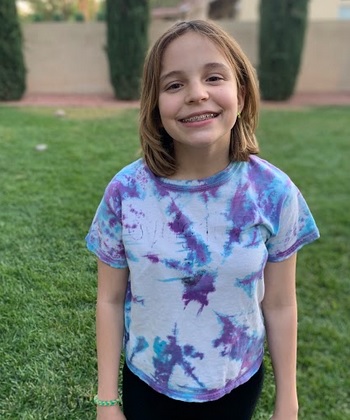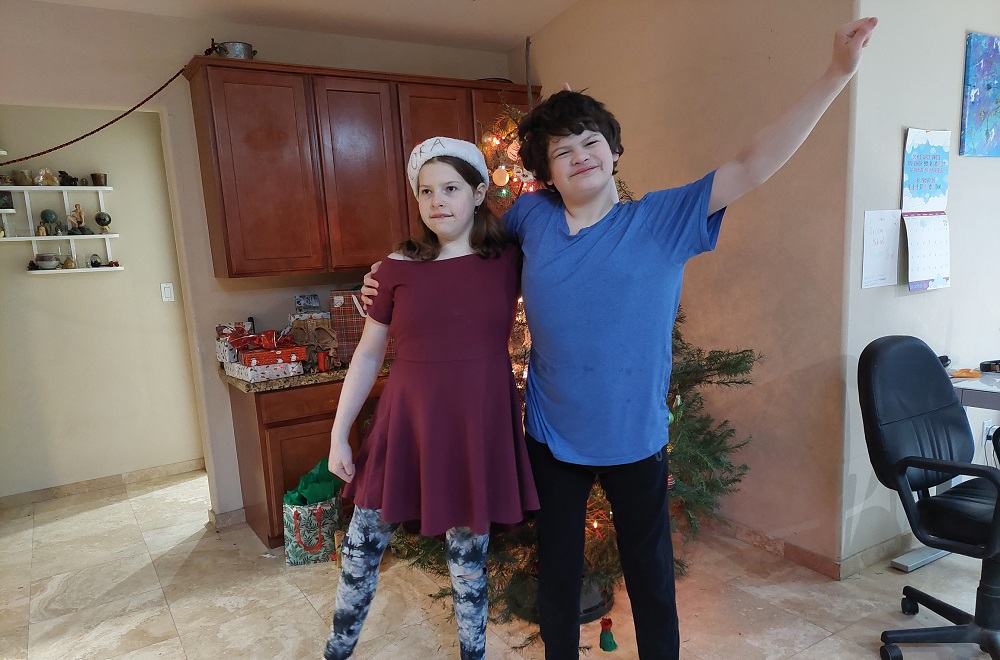When the COVID-19 pandemic hit in March 2020, Megan Smith took her daughter out of school. She wanted to keep her parents, 60 and 69, who have asthma and live with her, her two children, her sister, three dogs, a lizard and a turtle, safe from the virus.
Smith’s 14-year-old son was already homeschooled. But after a year and a half of homeschooling him along with her 12-year-old daughter, who are both on the autism spectrum and have attention-deficit/hyperactivity disorder (ADHD), it was clear homeschooling wasn’t working for any of them.
Her son struggled to see her as a teacher. Her daughter, who thrives more in social settings, struggled with the added anxiety of being stuck in the house. Both needed something more than she could provide at home. Smith too, needed to go back to work.
“We had exhausted the board games and card games and we had ordered puzzles,” Smith said. “That was nice, but then after a while it wasn’t nice anymore. It was kind of mundane and exhausting, and it became an extra chore to find something stimulating for everyone in the home that day.”
The opportunity to enroll both children in “microschooling” — smaller, specialized schools specifically designed for certain groups of students, in this case, “neurodivergent” youth — last fall was “life-changing,” she said. But it wouldn’t have been financially possible without the two $5,000 grants her children received from Nevada’s Transforming Opportunities for Toddlers and Students (TOTS) program.
“He really enjoys it — it’s a place he feels comfortable and safe,” Smith said of her son. “For someone on the spectrum to be in a space with more than a handful of people is really difficult.”
Smith’s children are among the 1,000 Nevada children with disabilities who received $5,000 grants from TOTS, funded by federal COVID-19 relief money. Recipients can use the money for medical care, addressing educational setbacks stemming from the pandemic, assistive technology, basic living expenses and selected other uses.
While grant recipients are required to sign agreements under penalty of perjury that they will only spend TOTS funds on allowable expenses, the state doesn’t check on how they spend the money.
“Being that the recipients sign these agreements, the State feels comfortable, and families are given the flexibility to use the funds as they need them,” Erik Jimenez, chief policy deputy in the State Treasurer’s office, wrote in an email.
The initial $5 million set aside for the program ran out in just three days. Given the popularity of the program, some advocates for school choice and students with disabilities say TOTS could be an example for other states to follow because it prioritized families most affected by the pandemic, avoided some of the bureaucratic hurdles typically associated with the distribution of emergency relief funds and allowed families to use funds on a variety of services, including education.
Increase in school choice legislation
School choice legislation spiked during the pandemic, and Nevada’s TOTS program has been championed by school choice advocates for allowing parents to use public dollars to pay for private schools and other private services. Other education advocacy groups, including the Southern Regional Education Board and the National Parents Union, have cited TOTS as a promising model for helping the families who need it most recover from the pandemic’s academic impacts.
“During the pandemic and post-pandemic circumstances, all families were obviously profoundly impacted in terms of their ability to meet their children’s education needs, but special needs families were without a doubt at the front of the line in terms of those who had the toughest challenges exacerbated by the pandemic,” said Don Soifer, founder and president of Nevada Action for School Options, a public policy research nonprofit.
New Hampshire and South Carolina also used federal COVID-19 relief dollars to fund private school choice programs through the distribution of scholarships and grants, said Ben Erwin, a policy analyst for the Education Commission of the States. However, the program in South Carolina was later ruled unconstitutional.
“What we’re seeing is more and more states undertaking these larger expansions of private school choice,” Erwin said.
Nevada’s TOTS program is unique in that it was funded by federal COVID-19 relief money allocated for state and local use, not federal COVID-19 relief money intended for schools, said Christine M. T. Pitts, director of impact and communications at the Center on Reinventing Public Education.
“The fact that it’s not the K-12 bucket of money is important because that means it’s freeing up the K-12 bucket of money to go to other things,” Pitts said. “By using the state and local fiscal recovery funds bucket, it’s saying the general state leadership is putting a stake in the ground around the outcomes for these students.”
Additional $7 million approved
Pandemic-related learning loss disproportionately affected low-income families and children with disabilities. It’s unclear how much of the TOTS funds reached children with disabilities from low-income families. The state is collecting data on the portion of recipients who reside in low-income households, but it won’t be complete until all funds are distributed, Jimenez said.
“From a policy perspective, one of the reasons this program was so popular was that there wasn’t a long process of application collection data upfront, so eligibility for the program was simply a matter of having a child with special needs,” said Soifer, the president of Nevada Action for School Options. “There was this understanding that in pandemic circumstances, any family with a special needs child was in need.”
Nevada’s state legislature has since approved an additional $7 million for the program, including $2 million specifically for children with disabilities in the foster care system. As of Nov. 14, the Treasurer’s Office had in total distributed about $9 million to more than 1,800 kids, Jimenez said.
“There was this understanding that in pandemic circumstances, any family with a special needs child was in need.”
“We were the hardest hit state in the country with unemployment, and we see kids with disabilities in Nevada are often in low-income households. This money really made a difference [for families who] didn’t have money coming from other sources or maybe they finally got their job back but it was paid less,” Jimenez said.
Individuals with disabilities receiving Supplemental Security Income (SSI) who accumulate more than $2,000 in savings risk having their benefits suspended. This makes it difficult for young people to save money for the future or for their families to save money for services they need.
However, the Nevada grant money was distributed into tax-free ABLE savings accounts, which are specifically for people with disabilities. Unlike regular savings accounts, ABLE accounts don’t reduce beneficiaries’ eligibility for programs such as Medicaid and disability payments. Federal legislation enacted in 2014 allowed states to establish ABLE account programs. As of mid-November, just over 1.5% of those eligible had opened accounts across states, said Dante Allen, Executive Director of CalABLE, California’s ABLE program.
In Nevada, the requirement that recipients have an ABLE account in order to receive grant money spurred a significant increase in new accounts. Fewer than 100 eligible people were enrolled in Nevada’s ABLE program as of 2019 and 1,200 were enrolled as of 2021.

Courtesy of Ashley Campbell
Layla Campbell, 14
“It really is genius and I think it is the future of ABLE,” Allen said. “Other states will want to look very closely at this opportunity to be able to directly help people with disabilities plan for their financial futures and to expand the awareness of the program in general.”
In the months before the grant program’s official launch in October 2021, a network of disability advocacy organizations, educators and nonprofits helped get the word out to families. Nevada Action for School Options shared information about the program in its newsletter, hosted an application workshop for families to get them set up with ABLE accounts and fielded phone calls for any difficulties that came up.
Chief of Staff at Nevada Action for School Options Ashley Campbell, who helped families with questions, knew first hand what the application process entailed. Her 14-year-old daughter, Layla, also received TOTS funding.
Campbell, who used her TOTS grant to enroll Layla in a specialized school, was considering taking on a second job to fund Layla’s education. Like Smith’s children, Layla also struggled in traditional school and homeschooling due to her disabilities. But since starting the specialized school made possible by the program, she has blossomed, Campbell said. As case numbers trended downward relative to the initial waves of the pandemic, Campbell finally had time to reflect on just how much Layla’s education was affected.
“When the pandemic hit, she was in fifth grade, and now she would be in eighth grade,” Campbell said. “That’s a long time for a child to have that uncertainty in their learning.”
***
Elizabeth Hlavinka is a born-and-raised Texan currently covering health and the environment from Costa Rica. She previously covered children’s health and mental health at MedPage Today.
***
This story was corrected on Jan. 30, 2023: An earlier version of this story incorrectly stated the age of Megan Smith’s son. He is 14.

































